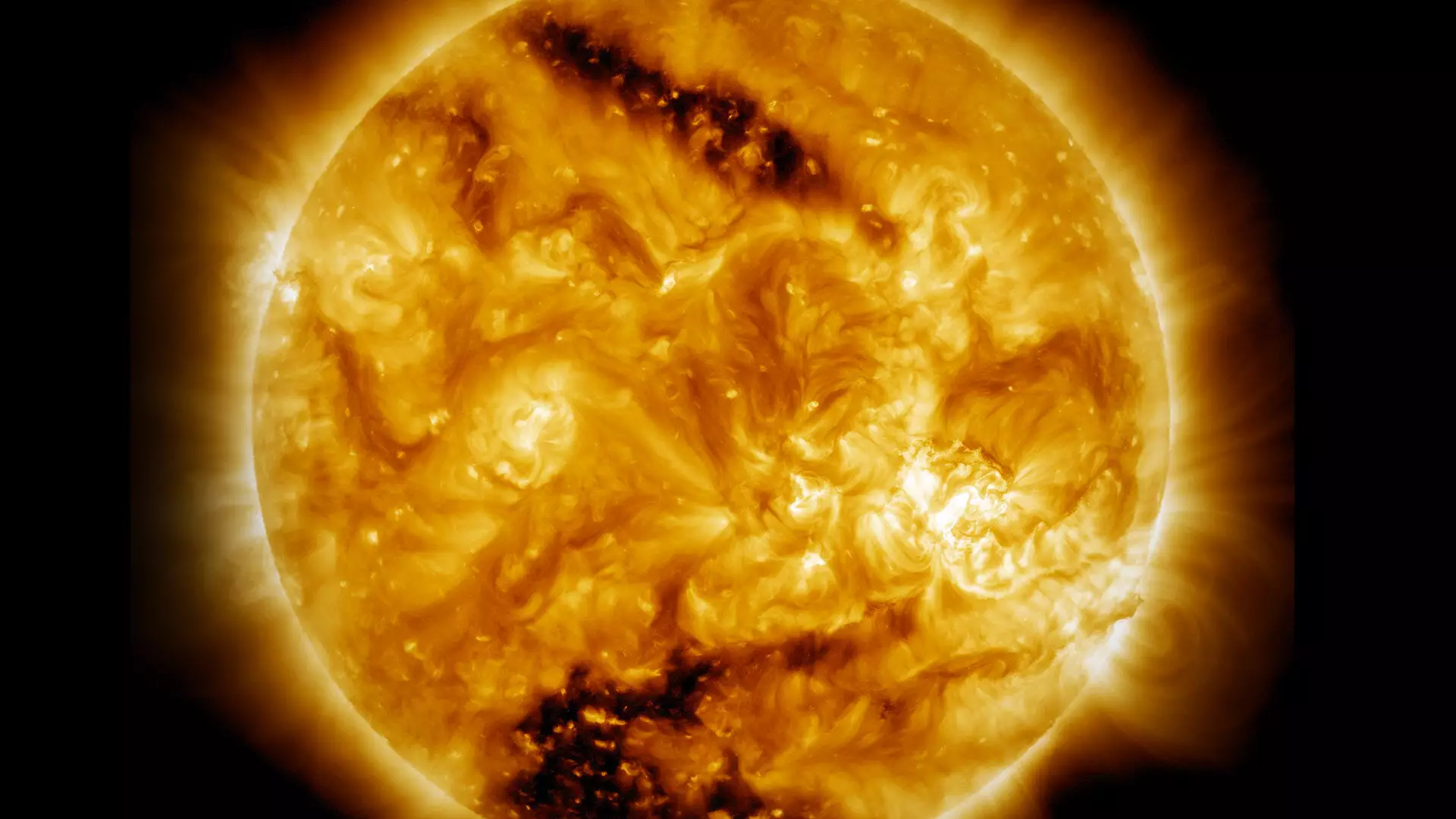The sun, a seemingly commonplace feature in our sky, is a source of continuous wonder and scientific inquiry. Its outer atmosphere, the solar corona, presents a stark contradiction to what one might expect. While the surface of the sun reaches around 10,000 degrees Fahrenheit, the corona dramatically escalates to a staggering 2 million degrees Fahrenheit—nearly 200 times hotter. This phenomenon, which has puzzled scientists for over eight decades dating back to its discovery in 1939, remains one of the sun’s most enigmatic characteristics. Understanding why this temperature dramatically increases as one moves away from the sun’s surface has eluded researchers despite myriad investigations aimed at uncovering the underlying heating mechanisms.
Recent Breakthroughs: Reflecting Plasma Waves as a Key to Understanding Heating
A recent study spearheaded by Sayak Bose from the U.S. Department of Energy’s Princeton Plasma Physics Laboratory offers fresh insights into this mystery. The research reveals that reflected plasma waves, specifically Alfvén waves, are likely contributors to the heating observed in coronal holes—low-density regions characterized by open magnetic field lines that extend into the vastness of interplanetary space. The findings, published in The Astrophysical Journal, have marked a crucial step towards unraveling this longstanding scientific conundrum. Bose emphasized the significance of this research, stating that the correlation between the heating in coronal holes and Alfvén wave reflection was previously hypothesized but lacked direct laboratory confirmation.
Alfvén Waves and Their Role in Energy Transfer
Named after the esteemed physicist Hannes Alfvén, who pioneered their theoretical foundations, Alfvén waves can be likened to the vibrations produced when a guitar string is plucked, albeit in the context of magnetic fields and plasma dynamics rather than stringed instruments. The research team, working with the Large Plasma Device (LAPD) at UCLA, successfully modeled conditions akin to those found in the solar atmosphere. By engaging these waves in a controlled setting, the researchers observed a significant phenomenon: when Alfvén waves entered regions marked by differing plasma densities and magnetic field strengths, they reflected, leading to a reverse propagation back towards their source.
The interaction between the incoming waves and their reflected counterparts instigates turbulence, a process that contributes directly to the observed heating of the surrounding medium. This feedback mechanism not only corroborates earlier theories but also provides experimental validation that had been lacking in prior research.
This study underscores the importance of laboratory experiments in advancing our understanding of astrophysical phenomena. Jason TenBarge, a contributing researcher from PPPL, remarked on the long-standing speculation surrounding Alfvén wave reflections. TenBarge articulated the novelty of this work, which demonstrates that the energy reflected by these waves is sufficiently robust to manifest as heating in coronal holes. This breakthrough highlights how intricate laboratory physics can illuminate complex natural systems, illustrating the interconnectedness of fundamental research and its astrophysical applications.
Alongside the laboratory experiments, the team employed sophisticated computer simulations to replicate and verify their findings. This multifaceted approach not only lends credibility to the results observed but also enhances the overall integrity of the research. By simulating conditions that mirror those in coronal holes, the researchers successfully demonstrated that Alfvén wave reflection occurs consistently under these circumstances. The thoroughness of their methodology reflects a commitment to understanding the nuanced physics of the solar corona.
Collaborative efforts across esteemed institutions, including Princeton University, UCLA, and Columbia University, further reinforce the significance of this research. Such partnerships foster the exchange of ideas and expertise, enhancing the overall understanding of complex phenomena.
As we continue to uncover the mysteries of our sun, the insights gained from studies like these illuminate the intricate dynamics at play within the solar atmosphere. Understanding the mechanisms responsible for the heating of the corona not only addresses a fundamental question in solar physics but also has broader implications for our knowledge of stellar behavior. With advances in experimental techniques and collaborative research, the journey into the sun’s enigmatic workings is bound to yield further revelations, transforming our comprehension of this vital celestial body.


Leave a Reply